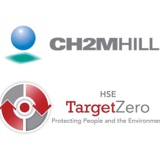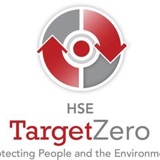Information
-
Corporate Construction Group HSE Program Review
-
Project Name
-
Program Review Date
-
Prepared by
-
Location
-
Personnel Participating in Program Review
Project Information
-
Background
-
Project Team
-
CH2M HILL Scope
-
Add media
Program Implementation
EXCELLENCE in SAFETY PROGRAM CULTURE Culture is the byproduct of consistent behavior
Daily Safety Walks
-
Conducted Daily
-
Includes CH2M HILL staff and subcontractor leadership
-
Schedule so that each CH2M HILL staff Participate at least once a week
-
Utilized to teach how to identify hazards and unsafe behavior
-
Document findings and corrective measures
-
Look for opportunities to strengthen safety culture
Daily HSE Coordination Meetings
-
Meeting (approximately 30 minutes) to discuss what is scheduled for the day (high hazard activities, deliveries, etc.)
-
AHAs and DSPTPs are in place for the day's activities
-
May coincide with the operations daily subcontractor coordination meeting if the project is holding them
Empowerment
-
Employee empowerment tools are used by the project (orientation, anonymous number, suggestion box)
-
Utilize creative ways to involve craft workers in the ESP (team atmosphere)
Safety Committee
-
Effective safety committee with a charter, and comprised mostly of project craft workers
-
Meets at least monthly
-
Walks the project
-
Open forum to discuss safety concerns and provide feedback
Recognition Program
-
Regular recognition provided, and documented
-
Recognition provided on a diversity of levels (individuals, crews, contractors, etc.)
INCIDENT REPORTING & ROOT CAUSE IDENTIFICATION
Project Hours
-
Monthly subcontract hours worked are submitted to HSE by the 10th day of the following month
Industry Comparison
-
Project injury rates are < 50% of the BLS (Bureau of Labor Statistics)
Initial Notification
-
Incidents are reported immediately
Final Notification
-
CH2M HILL and Subcontractor final incident investigations are completed and submitted within 48 hours
Near Miss Reporting
-
Near-miss incidents follow the initial and final notification requirements
SAFETY PLANNING
Subcontractor Prequalification
-
All primary subcontractors are prequalified by the HSM prior to contract
-
All subcontractors submit COI (Certificate of Insurance) that meets limits of insurance requirements
-
Safety prequalification packages are complete and on file
Contracts and Insurance
-
Standard HSE contract used (Exhibit E, Short Form or Exhibit G, Long Form) and it is tailored if needed for specific project hazards
Project-Specific FSI/APP (Field Safety Instructions/Accident Prevention Plan)
-
FSI/APP read and signed by all CH2M HILL staff and the Subcontractor Representative
Pre-Construction Meetings
-
Pre-construction meeting is held with all subcontractors
-
HSM attends all pre-construction meetings, either in-person or via conference call
Emergency Planning
-
ERP (Emergency Response Plan) is project specific
-
Drills are conducted at least 2 times a year with the first drill within 90 days of project start
Activity Hazard Analysis (AHA)
-
Completed
-
Identifies keys steps, with their key hazards and controls in sufficient detail
-
Observed to be followed in the field
-
Include signatures of crew members
-
Readily available for review
Safety Pre-Task Planning
-
Daily Safety Pre-Task Plans (DSPTPs) are completed
-
Identifies key hazards and controls
-
Observed to be followed in the field
-
Includes signatures of crew members
-
Readily available for review
-
CH2M HILL Project staff regularly attend subcontractor daily safety pre-task meetings to provide oversight
EDUCATION & TRAINING
Staff Training
-
Project Team members have completed all of the required HSE training prior to joining the project
-
Newly hired Project Team members have completed all of the required HSE training within 60 days of joining the project
Subcontractor Training
-
Subcontractor training is provided to be kept on file
-
Subcontractor competent person(s) have the OSHA 10 Hour Construction Safety Awareness course, as well as competent person training for respective tasks
-
Subcontractor employees have the required HSE training for their respective tasks
Vendor Training
-
Vendor training has been provided and documented
-
Vendor training has been used as part of the monthly mass safety meetings, when possible
Project Safety Orientation
-
All project workers and site visitors receive a project safety orientation prior to being allowed on site
-
Orientation includes ESP training as well as ESP commitment banner/letter
Mass Safety Meetings
-
At least monthly
-
All project workers participate
-
PM provides "State of the Project" update, including safety progress and milestones
STS (Safety Trained Supervisor) Designation
-
All CH2M HILL Project Team staff who spend time in the field have the STS certification
Values Based Safety Environment (VBSE)
-
All Project Team staff have received the VBSE training
-
Subcontractor field management staff have received the VBSE training
IMPLEMENTATION, VERIFICATION & FOLLOW UP
HSM Program Reviews
-
HSM visits monthly, unless the PM and HSM consider a particular monthly visit unnecessary
HSM Review Findings
-
HSM Program Review Findings Table completed and submitted to the HSM within the time period requested by the HSM
-
Completed Findings Table is filed in the project filing system, and supporting detailed documentation filed as well (photos, copy of certifications, etc.)
-
PM reviews and signs the completed Findings Table
-
Program Review findings are discussed at the next regular contractor meeting and Mass Monthly Safety Meeting
CH2M HILL Staff Inspections
-
Formal inspections conducted at least weekly, using the appropriate Self-Assessment Checklists
-
Findings, Corrective actions and date of corrections appropriately documented
-
Inspections forms reviewed and signed by the PM
Subcontractor Inspections
-
Conduct safety inspections at least weekly, and provide documentation to CH2M HILL
-
Safety deficiencies noted and corrections documented
-
Safety inspections are on file
Drug Free Workplace
-
Project workers have pre-job drug test documentation prior to being allowed to receive project safety orientation
PPE (Personal Protective Equipment) Use
-
Project workers consistently use the project-required basic PPE (hard hat, safety glasses, gloves, work boots and high visibility clothing)
-
Additional PPE required for specific tasks documented on the AHA/DSPTP, and worn properly
-
Proper training provided and documented (fall protection, respirators, etc.)
Standard of Conduct Policy
-
Project safety policies implemented consistently
-
Graduated system of enforcement utilized when necessary
HSE Project Filing System
-
Hard copy filing system setup, which includes the program elements
-
All Project Team staff know how to retrieve information from filing system
-
SharePoint utilized for electronic storage of HSE documentation
Field Observations
-
Animal & Biological
-
Atmospheric & Particulate Hazards
-
Chemicals
-
Confined Space Entry
-
Cranes
-
Concrete & Masonry
-
Electrical
-
Environment
-
Equipment & Tools
-
Ergonomics
-
Excavations
-
Fall Protection
-
Fire Safety
-
Health & Hygiene
-
Hearing Conservation
-
Heavy Equipment
-
Housekeeping
-
Ladders & Stairways
-
Machine Guarding
-
Material Storage
-
Office Safety
-
Personal Protective Equipment
-
Personal Safety
-
Public Safety
-
Respiratory Protection
-
Rigging
-
Scaffolding
-
Security
-
Shift Work
-
Temperature & Weather
-
Traffic Control
-
Walking Working Surfaces
-
Welding & Cutting
-
Work on Water
-
Other
Summary
-
Summary
-
Health & Safety Manager

















